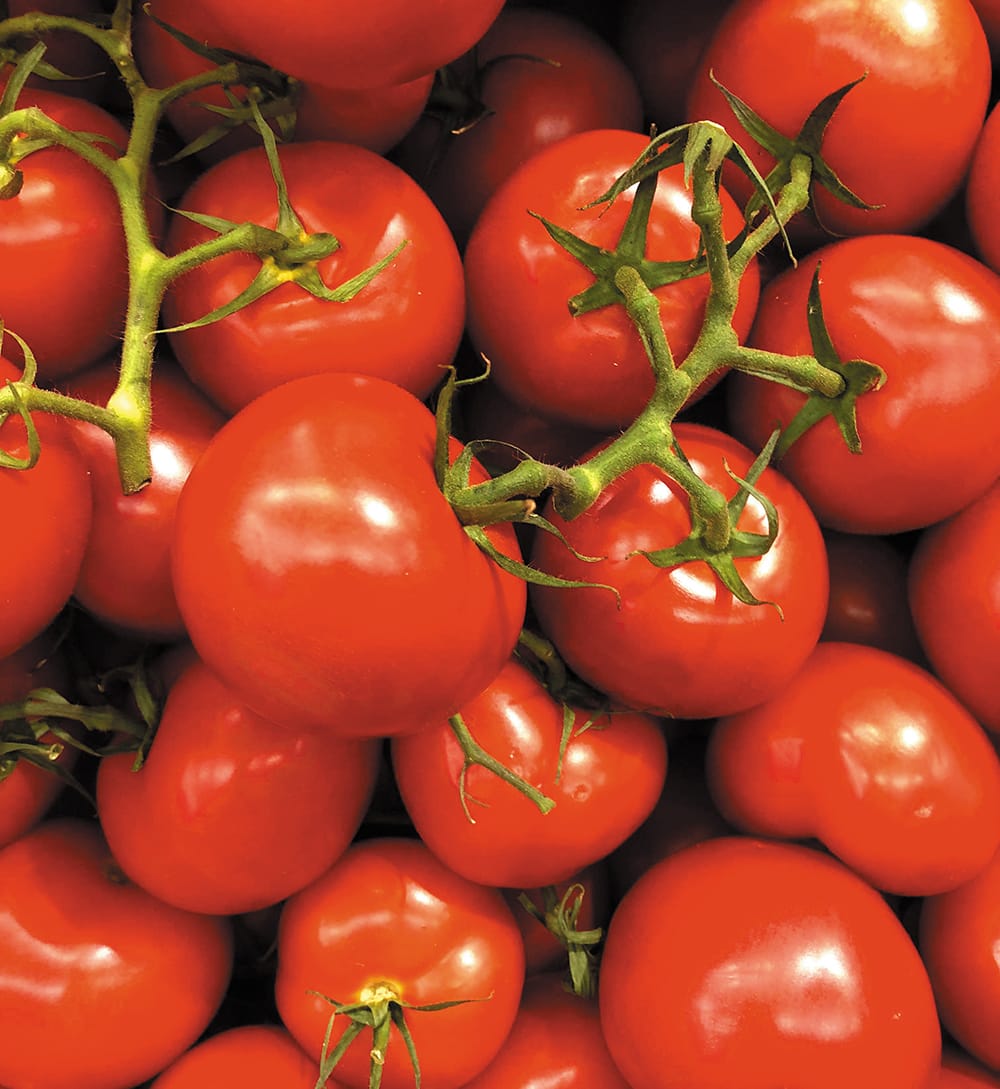Anyone who knows me knows I won’t shut up about my tomato plants.
In my defense, can you imagine a world without marinara, salsa, and so much more? Tomatoes aren’t just easy on the plate, either — they’re fairly straightforward to grow, thriving in pots or in the ground. So, if you’re ready to try your hand at gardening but aren’t sure where to start, let’s talk tomato to get a handle on the basics.
Know Before You Grow
Though there are over 10,000 tomato varieties, there are two main types of tomato plant: determinate and indeterminate. They don’t refer to the kind of fruit the plants produce (that’s what “variety” means) but instead indicate how the plant grows. Determinate plants are bush-like and produce all their fruit in one big crop before dying. On the other hand, indeterminates grow like vines and can reach up to eight feet tall, producing their fruit all summer long.
If you’re gardening in pots, I recommend planting a determinate variety due to their smaller size. For in-ground beds, you have your pick of the litter. Whatever type you choose, be sure to grow a variety suited for Southern California (zone 9A), which usually means one that tolerates dry heat. My favorites include San Diego for a standard tomato and Super Sweet 100 for a cherry. However, if you’d like a few more options, check out the selection at Sunset Boulevard Nursery or Orange County Farm Supply.
To Seed or Not to Seed?
Since we’re already in April, it’s a little too late to start tomatoes from seed. I recommend purchasing seedlings from one of the nurseries above — not a big box store — since they’re more likely to have varieties suited for our area.
When you’re at the nursery ready to pick a seedling, bigger is not better. Bigger plants will have been in their pots for longer, meaning they’re more likely to be stressed. If you see roots coming out of the bottom of the pot, that’s a sign it should have been planted already. Choose small, stocky plants that are a deep green with little to no roots poking through.
Pick a Spot, Like a Pot
It’s critical that tomatoes get eight hours of sunlight per day, but otherwise, they’re not picky about whether they’re grown in-ground or in pots. An indeterminate tomato will need a pot at least two feet deep and two feet wide (about 35 gallons). A determinate variety can tolerate a smaller pot but no smaller than 18 inches in diameter. Make sure the pot has holes in the bottom for drainage, and use a large tomato cage to support your plants as they grow. For tomatoes grown in-ground, a supported plant needs 15 inches of space from its nearest neighbor.
Bedtime for Young Plants
If you’re growing your plants in-ground, see last month’s article on soil to learn how to prepare your bed for planting. If you’re gardening in pots, try the lasagna method. Fill the first six inches of your pot with compost, then add three to four handfuls of dry fertilizer, and finally, add a six-inch layer of potting soil. Repeat until you hit the top of the pot. Then, dig a hole and bury your seedling (leaves included) until only the top three inches of the plant remain above the soil. Apply a two- to three-inch layer of mulch, and water it well afterward. For the next three weeks, water the plant only when the first inch of soil becomes dry.
Finally, be patient — and happy gardening! spt






Comments